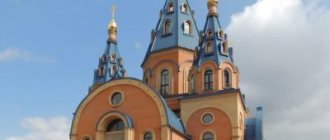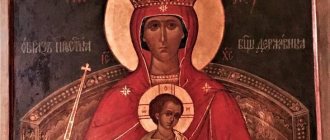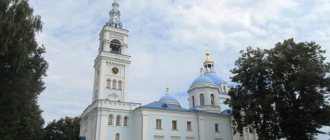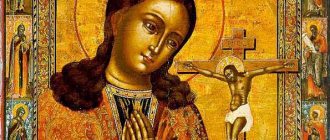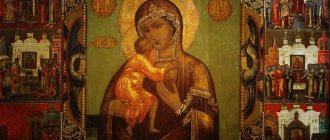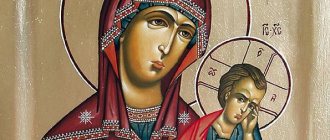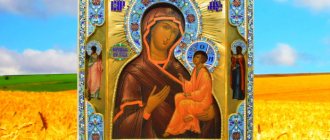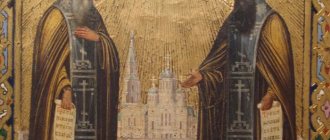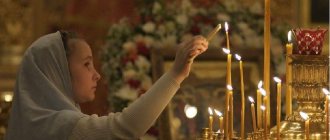How many icons of the Mother of God are there?
No one knows exactly how many different images of the Mother of God have been written. In the monthly book published by the Moscow Patriarchate, 295 names are mentioned.
But according to iconography, the images of the Mother of God are divided into only three types: Oranta (looks with arms raised up), Hodegetria (the baby blesses the Mother of God), Eleusa (tenderness, clinging to each other).
Most likely, you will find this article useful about how the Guardian Angel icon helps.
purchase icons of the Mother of God in the Orthodox online store Svyatsy.
Icons of the Mother of God with photos and descriptions
Below is a list of Holy Faces, the most popular or, on the contrary, little known, whose history or description is very interesting.
"Kazan" Icon of the Mother of God
Celebrated on July 21 and November 4. The miraculous image saved the country in times of unrest, disasters and wars. Its significance is to preserve the country under the shadow of the Mother of God.
The most revered image in Rus'. Found in 1579 in Kazan in a fire during the persecution of Christians. They bless married couples, pray for the healing of eye diseases, and to repel foreign invasion.
Body icon with chain “Matrona of Moscow” - a spiritual and beautiful gift for loved ones - buy for 1,490 rubles
Icon of the Mother of God “Inexhaustible Chalice”
Celebrated on May 18th. They pray for deliverance from drunkenness.
In 1878, one retired soldier suffering from heavy drinking had an apparition of St. Varlaam to go to the city of Serpukhov and pray there in front of a certain image. This icon turned out to be the now famous “Inexhaustible Chalice”.
Icon of the Most Holy Theotokos “Theodorovskaya”
Celebrated on March 27 and August 29. They ask her for a happy marriage and healthy children.
Possibly written by the Apostle Luke. It was located in the 12th century in the city of Gorodets. She miraculously moved to Kostroma: she was seen in the hands of St. the warrior Theodore Stratilates, who walked with her through the city. Hence the name “Feodorovskaya”.
"Sovereign" Mother of God
Celebrated on March 15th. The meaning of the image is that power over Russia passed from the Tsar directly to the Virgin Mary.
Revealed in 1917 in the village of Kolomenskoye, in the Moscow region, on the very day on which Nicholas II abdicated the throne. The Most Holy Theotokos seemed to have received the power from the Tsar.
"Vladimir" icon
Celebrated on June 3, July 6, September 8. The significance of the image for Orthodox Christians in preserving Russia from foreign warriors.
Written by the Apostle Luke on the tabletop of the Holy Family. Saved Moscow from the invasion of Tamerlane. Under Soviet rule, she exhibited at the Tretyakov Gallery.
"Tikhvin" Mother of God
Celebrated on July 9th. The meaning of the image is that it protects the northern borders of Russia.
This image, according to legend, was written by the evangelist and apostle Luke. He miraculously appeared near the city of Tikhvin. Particularly remarkable among the many miracles revealed by the image was the salvation of the Tikhvin monastery during the Northern War in 1613.
"Three-handed"
Celebrated on July 11 and 25. Means the omnipotence of God's miracles.
So named after a miracle that happened to St. John of Damascus. His severed hand grew back into place through prayer at the image of the Mother of God. In honor of this event, a silver hand was attached to the frame of the image.
"Unexpected Joy"
Celebrated on May 14 and December 22. The meaning of the image lies in the mercy of the Mother of God even towards unrepentant sinners, leading them to repentance.
The icon is named in memory of the conversion of one lawless man, who, with the Archangel's greeting, asked for a blessing for his lawless deeds.
"Blessed Womb"
Celebrated on May 21st. Provides assistance during childbirth.
In the 14th century it was located in the Annunciation Cathedral of the Kremlin. Glorified by many miracles.
"Annunciation"
Celebrated on April 7th.
The image is dedicated to the twelfth holiday of the same name.
"Blessed Sky"
Celebrated on March 19th. The meaning of the image is that it is in this form that, according to the assumption, the Blessed Virgin Mary will descend to earth, preparing people for the second coming of Christ.
The image was brought to Moscow by the Lithuanian princess Sofia Vitovtovna at the beginning of the 15th century.
"Joy of All Who Sorrow"
Celebrated on November 6th. The icon means the mercy of the Mother of God to the offended and suffering.
In 1688, the sick Euphemia, a relative of the patriarch, suffering from an incurable disease, was miraculously healed in front of this image.
"Upbringing"
Celebrated on March 18th. The significance of the icon is associated with the upbringing of the younger generation in the Orthodox faith.
This is a Byzantine image known for many miracles. Provides assistance to parents and their children.
"Life-Giving Source"
Celebrated on the fifth day after Easter. They pray for the preservation of prudence and a sinless life.
The icon is named in memory of the holy source of water near Constantinople. In this place, the Virgin Mary appeared to Leo Marcellus and predicted that he would become emperor.
"Deliverer"
Celebrated on October 30th. In 1841 in Greece, a prayer vigil in front of this image miraculously stopped a locust invasion.
The icon was with the family of Alexander III when their train was wrecked. It was on this day that the name day of the icon began to be celebrated, in commemoration of the salvation of the emperor.
"Key of Understanding"
They pray for children who have difficulty learning. The icon is locally revered and is located in the Nizhny Novgorod region.
Appeared in Russia in the 16th century, related to the image of “Addition of mind”.
"Mammal"
Celebrated on January 25th. They ask for a healthy birth and feeding.
The image was transported to Serbia from Jerusalem by St. Savva in the 6th century.
"Fadeless Color"
Celebrated on April 16th.
Signifies the purity of the Blessed Virgin Mary.
Read more about the icon of the Mother of God Unfading Color.
"Otrada"
Celebrated on February 3. It means the great mercy of the Mother of God to sinners, despite even her Son.
The image is associated with a miraculous deliverance from the robbers who attacked the Vatopedi Monastery on Mount Athos.
"Assistant in childbirth"
Celebrated on January 8th.
Helps with difficult childbirth.
"Self-Written"
Celebrated on July 12th. Its special significance is in the conversion of people of other faiths to Orthodoxy.
Locally revered on Mount Athos. It miraculously manifested itself in a pious icon painter from the city of Iasi in 1863.
"Quick to Hear"
Celebrated on November 22. Signifies quick condescension and mercy towards those praying.
Athos icon. From her, a miraculous healing of the disobedient monk’s vision occurred.
"Quiet my sorrows"
Celebrated on February 7th. Relieves mental anguish. Many healings came from her.
Brought to Moscow in 1640 by Cossacks. She poured myrrh in 1760.
"Healer"
Celebrated on October 1st. Famous for numerous healings.
Meaning: comfort to the sick. Often decorates hospital churches.
Wonderful Orthodox icons of saints with children and holy children
Venerable Stylian of Paphlagon with babies
In continuation of the series of publications about amazing, rare or unusual Orthodox icons, I invite readers to consider today the canonical iconographic images of the patron saints of children, as well as holy youths and infants.
“Christ and the Children” - icon
The most famous image, which has several spelling options, where children are depicted on the icon, is the icon “Christ and the Children.” It refers us to the events of the tenth chapter of the Gospel of Mark, as well as to a parallel episode in the Gospel of Matthew, where the Savior himself especially notes the purity of a child’s soul and the child’s complete trust in the love of his parents:
“They brought children to Him so that He could touch them; The disciples did not allow those who brought them. Seeing this, Jesus was indignant and said to them: Let the little children come to Me and do not hinder them, for to such is the Kingdom of God. Truly I say to you, whoever does not receive the Kingdom of God like a child will not enter it. And he embraced them, laid his hands on them and blessed them” (Mark 10:13-16).
Icon "Joseph the Betrothed with the Child of God"
Traditionally, it is the Most Pure Virgin who is depicted holding the Savior in her arms. But occasionally there are also variants of the image, when the youth Jesus is held in the arms of his adoptive father Joseph the Betrothed.
Image of Simeon the God-Receiver with Christ in his arms
The Gospel of Luke describes a meeting in the Jerusalem Temple of Elder Simeon the God-Receiver, who, according to Tradition, was one of the seventy-two translators of the Septuagint, doubted that “a virgin would give birth” and, by the will of God, lived for a very long time in order to see the Savior with his own eyes.
The icon depicts the moment when Simeon says to the Lord: “Now, Master, you are letting your servant go in peace, according to your word, for my eyes have seen your salvation, which you have prepared before the face of all nations, a light for the enlightenment of the pagans and the glory of your people Israel.” (Luke 2:29-32).
Image of St. Stylian of Paphlagonia
The Monk Stylian of Paphlagon, also known as Stylian the Intercessor of Children, had special boldness before God in prayer for children. Mothers brought sick babies to him in the thousands, and through the saint’s prayer they all received healing.
The saint is especially revered in Greece, but parents in other countries also pray to him for their children. The monk is almost always depicted on icons with one or more babies.
Icon of St. Julian of Campania
This saint is also often prayed to for the well-being and recovery of children. According to his life, Saint Julian not only healed children from illnesses, but also resurrected infants who suddenly died.
On icons of St. Julian, they are also usually depicted with a baby in his arms praying to the Lord.
“The Cathedral of the Holy Innocents of Bethlehem” - icon
Another image that refers us to the gospel events is the “Cathedral of the Holy Innocents of Bethlehem.” Those same 14,000 pure souls under the age of two, whom the tetrarch Herod the Great ordered to exterminate in a vain attempt to compete with the Creator himself and prevent the Messiah promised to the Jews from coming to maturity.
However, we know that an angel of God warned Joseph the Betrothed about the danger in advance and he fled to Egypt with the Most Holy Theotokos and the Child of God for several years.
The children's deaths were not in vain. The Church honors them as the first martyrs for Christ. That is why, in the icon, they are led by God the Son himself.
Today this image is prayed to by parents who acted with their children following the example of Herod and destroyed them in the womb for the sake of one or another earthly consideration.
Righteous Artemy Verkovlsky
From childhood, this youth was distinguished by piety, obedience and kindness to everyone around him. When he was 12 years old and he and his father were walking across a field in a thunderstorm, the boy was struck to death by lightning.
Superstitious fellow villagers considered the child cursed by God and forbade not only his funeral service, but even his burial...
The child’s remains lay in the field for 32 years until they were found incorrupt. And soon numerous healings began to occur from the relics of the righteous man. Today, parents pray to this saint for the cultivation of righteousness in their children.
Martyr Gabriel of Bialystok - icon
A six-year-old boy became a martyr for the faith in Poland at the end of the 17th century. The son of pious peasants was stolen from his home by a certain Shutko, a member of a savage Jewish sect.
Jokingly, he and his comrades tortured the baby to death, and then threw the body into a field, where it was discovered and guarded by dogs. They helped people discover it.
Subsequently, the baby’s relics were found incorrupt, and residents of the surrounding villages witnessed many miracles through his prayers. Today Gabriel of Bialystok is venerated as a martyr by the Polish Orthodox Church.
"Holy Righteous Tsarevich Demetrius of Uglich"
The son of Ivan IV the Terrible from Maria Nagaya, upon the accession of his brother Theodore Ioannovich, was sent to settle in Uglich along with his mother and other relatives.
According to the most likely version of his violent death, the little prince was killed right in the courtyard of his residence, as a potential contender for the Russian throne, by political opponents.
The Church glorified the pure soul in the ranks of the holy passion-bearers. Numerous healings occurred from his relics. Especially a lot - from eye diseases.
“The Holy Passion-Bearer Tsarevich Alexei” - icon
Tsarevich Alexei was 14 years old when he, his sisters and crowned parents became victims of a brutal political murder in Yekaterinburg.
Before their death, the couple and their children prayed a lot, participated in the Sacraments of the Church, and even forgave their future executioners. For the feat of goodness in accepting violent death, the Church glorified the royal family in the guise of the holy passion-bearers.
“Holy Martyr Basil of Mangazeya” - icon
Once upon a time, the city of Mangazeya in the middle reaches of the Ob was the largest fur trade center in Russia. Young Vasily, the son of a pious Yaroslavl merchant, found himself in this town on trade business.
Vasily became a clerk for a rich local merchant, who turned out to be a homosexual and began to persuade a boy (14 years old) to sin.
When Vasily indignantly rejected the advances, the merchant slandered him before the local governor, accusing him of theft. And together they tortured and killed the child.
After 50 years, the saint’s relics were found incorrupt, and in a vision, through the prayer of local residents, he revealed his name and promised to intercede with God for the inhabitants of the region. Soon, due to the abundance of healings and miracles, the Church glorified the righteous Basil as a saint.
“Three Youths in the Fiery Furnace” - icon
Christians often pray to this image to protect their home from fire.
The Prophet Daniel and his three friends, Hananiah, Azariah and Mishael, were selected as children from among the Jewish children to the court of King Nebuchadnezzar in Babylon.
Here, envious people accused the youths of violating the royal order, and Nebuchadnezzar threw them into a giant red-hot furnace. But in the oven, the pious youths were protected from the fire by the Archangel Michael, and they came out unharmed.
If you know icons of other patrons of children, unusual images of saints with children (excluding the Mother of God, since we consider Her images separately) and icons of holy children, you can indicate them in the comments to complete the review!
Original publication on the author's blog. We also recommend: “Wonderful icons of Orthodox saints with animals.”
